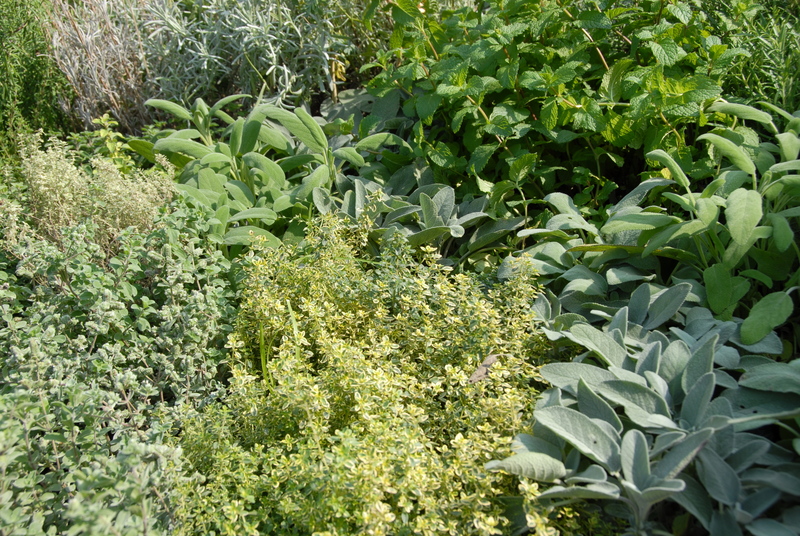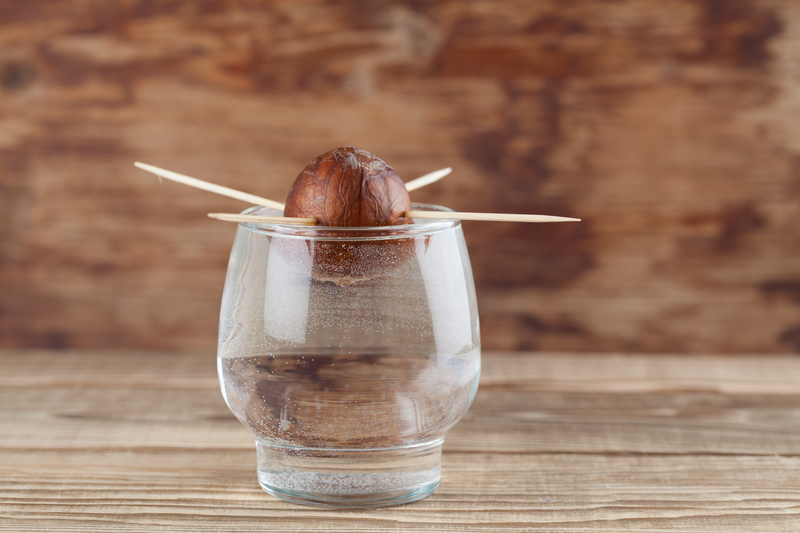Journey into Orchidology: Conquering Care Challenges
Posted on 19/05/2025
Journey into Orchidology: Conquering Care Challenges
Orchids are among the most captivating and diverse flowering plants on earth. Their allure spans continents, and enthusiasts worldwide are mesmerized by their beauty, variety, and mystique. But with their stunning visuals comes a reputation for fragility--a myth that deters many would-be orchidologists from taking the plunge. This comprehensive article invites you to embark on a journey into orchidology, uncovering practical strategies for conquering care challenges and growing thriving orchids at home.

Understanding Orchidology: The Science Behind Orchids
The term orchidology is the scientific study of orchids--their anatomy, ecology, taxonomy, and cultivation. There are over 28,000 recognized orchid species and countless hybrids, making orchid family (Orchidaceae) one of the largest in the plant kingdom. Appreciating the diversity and adaptability of orchids is foundational to their care.
- Epiphytes: Many orchids grow on trees, not in soil, absorbing moisture and nutrients from the air.
- Terrestrial orchids: Some thrive on forest floors, adapting to different soil and light conditions.
- Symbiosis: Orchids often have specific relationships with fungi and pollinators.
Understanding these basics is your first step in mastering orchid care and in overcoming common pitfalls faced by new enthusiasts.
The Art and Science of Orchid Care
Successfully caring for orchids--from the elegant Phalaenopsis to the radiant Cattleya--requires more than a green thumb. It's about decoding the unique requirements of each plant, and adjusting your methods as you journey deeper into orchidology.
1. Light: The Secret Ingredient
Most orchids demand bright, indirect light. While some, like Vanda, flourish outdoors with filtered sunlight, others--such as Phalaenopsis--prefer shadier conditions.
- East or West-facing windows: Provide optimal light for many orchid species.
- Too much direct sun: Can scorch leaves; too little hampers bloom.
- Artificial grow lights: A solution for low-light environments.
Light is central in orchid development, affecting both leaf coloration and flower production. Watch for yellowing leaves or lack of blooms--signs of light stress.
2. Mastering Watering: The Delicate Balance
One of the biggest orchid care challenges is watering. Like Goldilocks, orchids want their water "just right"--not too much, not too little.
- Watering frequency: Varies by species, season, and potting medium.
- Root health: Orchid roots should be plump and green; shriveled or mushy roots indicate poor care.
- Tip: Allow most orchids to dry slightly between waterings. Use a clear pot to observe root health and moisture levels.
Mistakes, such as overwatering, often lead to root rot--a common plight for beginners on their orchidology journey.
3. Humidity: Mimicking Nature's Embrace
Orchidaceae evolved in lush, humid jungles. Most species crave humidity between 40-70%.
- Humidity trays: Fill a shallow tray with water and pebbles to increase air moisture.
- Mister: Regularly mist orchid foliage (but not the flowers).
- Grouping: Grouping orchids together helps raise local humidity.
Low humidity can result in bud blast (flower buds dropping before opening) and wrinkled leaves. Monitor your orchid's microclimate for optimum health.
4. Temperature: Consistency is Key
Temperature swings are rarely beneficial to orchids. Most hybrids thrive between 60?F (16?C) at night and 80?F (27?C) during the day.
- Warm-growing orchids: e.g., Dendrobium, like higher temperatures.
- Cool-growing orchids: such as Cymbidium, appreciate cooler nights.
- Drafts: Avoid placing orchids in the path of heater vents or fans.
Consistency, with slight seasonal changes, closely mimics natural conditions, promoting vigorous growth and flowering.
5. Potting & Media: Setting the Foundation
Orchids dislike being "root-bound" in rich, heavy soils. Instead, they often require special orchid bark mixes or sphagnum moss--mediums that drain rapidly and allow roots to breathe.
- Repotting: Do this every 1-2 years to replenish media and prevent compaction and disease.
- Pot selection: Use clear plastic pots for root visibility and to mimic natural light exposure.
- Tip: Never reuse old potting media, which can harbor fungi or pests.
A healthy root environment is essential for overcoming common orchid care challenges.
Conquering Orchidelogical Challenges: Expert Solutions
Common Problems--and How to Solve Them
-
Yellow Leaves: Cause: Overwatering, poor drainage, or sometimes old age.
Solution: Check media moisture, repot if needed, and ensure pot has drainage holes. -
No Blooms: Cause: Insufficient light, improper fertilization, or stress.
Solution: Increase filtered light and use bloom-boosting fertilizer during active growth. -
Root Rot: Cause: Waterlogged media.
Solution: Remove mushy roots, treat with fungicide, and repot in fresh, airy medium. -
Pest Infestation: Cause: Mealybugs, scale, spider mites.
Solution: Isolate affected plants, use insecticidal soap, and rinse leaves thoroughly. -
Leaf Spots: Cause: Fungal or bacterial pathogens from excess moisture.
Solution: Improve air circulation, prune affected leaves, and reduce overhead watering.
Solving these issues swiftly is key to orchid success and a hallmark of a maturing orchidologist.
Essential Orchid Care Equipment
- Fertilizer: Use a balanced orchid-specific fertilizer ("weakly, weekly").
- Pruning shears: For removing spent flower spikes and dead roots.
- Orchid stakes and clips: Support tall flower spikes gently.
- Humidity trays and hygrometers: For monitoring and adjusting environment.
- Clear pots: For monitoring roots and moisture levels.
Cross-referencing orchid species care guides and using correct tools greatly increases chances of success as you progress on your orchidology adventure.
The Rewards of Advanced Orchidology: Rare Species & Blooming Success
Once you've established a solid care routine, you may wish to expand into more exotic or challenging orchids--think Masdevallia, Paphiopedilum, and Miltoniopsis.
- Research: Know the native habitat and replicate it closely.
- Join communities: Engaging in orchid societies or online forums provides valuable shared wisdom.
- Experiment: With temperature drops, light cycles, and humidity for triggering rare blooms.
Nothing rivals the thrill of coaxing a rare, notoriously finicky orchid into bloom. That sense of achievement drives many to further their orchidological journey.
Benefits of Hobby Orchidology
- Stress relief: Nurturing living beauty enhances mental health.
- Educational enrichment: From botany to global ecology.
- Community: Connecting with fellow orchid lovers worldwide.
- Conservation: Many orchid growers participate in protecting endangered species.

Frequently Asked Questions on Orchidology and Care
Why are orchids considered challenging?
Orchids come from diverse and often highly specific environments. Matching their unique light, water, and humidity needs can be confusing at first, but with experience, most species become straightforward to cultivate.
How often should I fertilize my orchid?
The common mantra is "weakly, weekly"--dilute orchid food and apply lightly with water during periods of active growth. Some orchids rest after flowering; reduce feeding accordingly.
What is the easiest orchid for beginners?
Phalaenopsis (Moth Orchid) is a top pick for novices. It adapts well to household conditions and is forgiving of minor mistakes--a great introduction to orchidology for beginners.
Can orchids survive indoors year-round?
Yes! Most common hybrids thrive indoors, provided they have sufficient light, humidity, and proper watering. Some enthusiasts even use grow lights to supplement natural sunlight.
Conclusion: Embrace Your Orchidology Adventure
The journey into orchidology is equal parts science, patience, and artistry. By understanding the special needs of orchids and tackling care challenges with proven strategies, anyone can unlock the world of these mesmerizing plants. With each new bloom, your confidence--and your appreciation for the wonder of orchids--will grow.
So gather your tools, join a local orchid club, and start your own journey into orchidology today. The rewards--stunning displays, inner tranquility, and the thrill of new learning--await those who dare to conquer the care challenges and truly embrace the magic of orchids.

